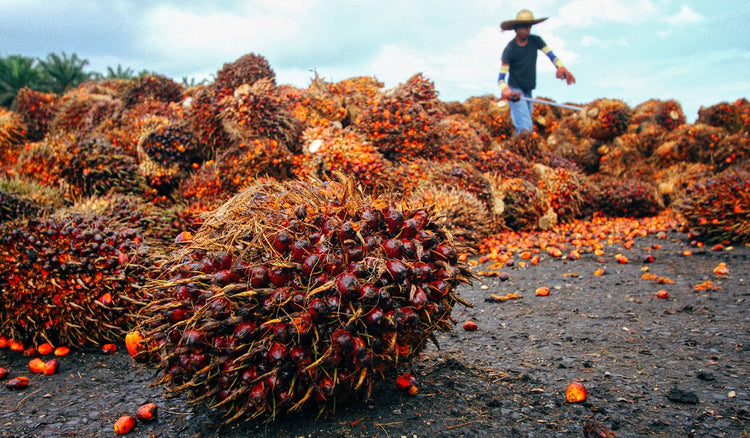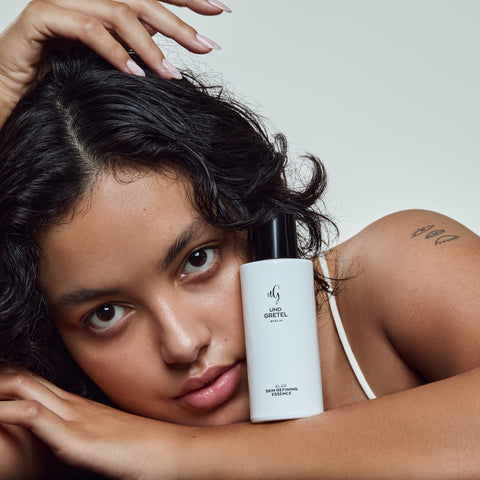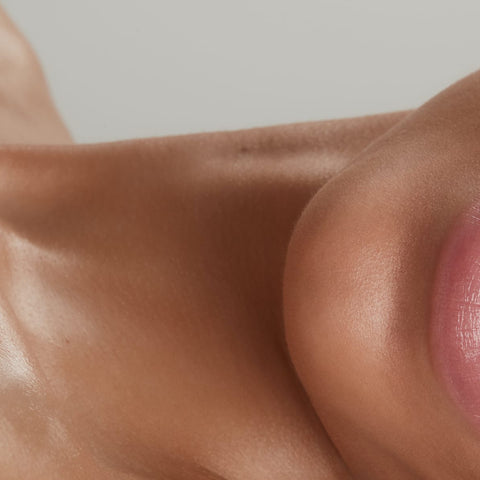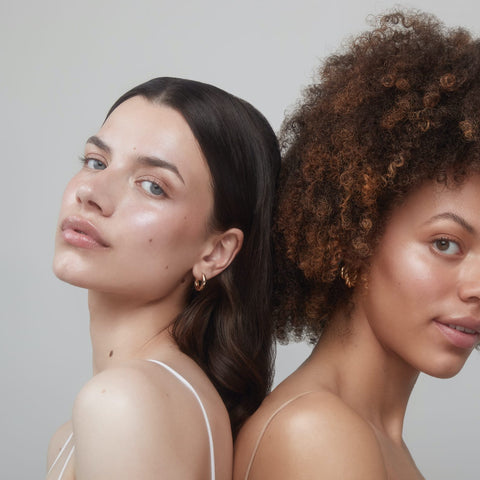
Palm oil – hardly any other plant product is discussed as much. It is used in countless food products and many other products such as cleaning agents, candles, paints, varnishes, agrofuels, and even cosmetics. One thing is immediately clear: regardless of the industry, almost all of them use palm oil. So what's harmful about it? What exactly is the big palm oil problem? And even more importantly: What solution have we at UND GRETEL found for this problem? Let's start from the beginning.
No.1 What is palm oil and where does it come from?
The fruit of the oil palm resembles an olive: It has a hard pit containing seeds. Surrounding this pit is the fibrous pulp. Both parts of the oil fruit—the pulp and the pit—store a great deal of fat. The pulp provides palm oil. It contains a high proportion of unsaturated fatty acids and also large amounts of vitamin E and vitamin A. The pit provides palm kernel oil, which is similar to coconut oil, consists primarily of saturated fatty acids, and is solid at room temperature.

The palm tree, which can grow up to 30 meters tall, produces fruits that together weigh up to 50 kilograms. Each palm tree bears between 3,000 and 6,000 fruits. This makes the oil palm by far the most productive of all oil-producing plants. There is essentially no better plant to meet the world's growing demand for cooking oil and vegetable fats for industrial use. There's just one major drawback: To thrive, the plant requires a warm, humid climate – the kind in which rainforests grow.
The oil palm was originally native to the West African rainforest. The increasing demand for palm oil has led to the plant being cultivated not only in Africa, but also in South America, and especially in Indonesia and Malaysia.
No. 2 The biggest palm oil problem
Palm oil itself as an ingredient isn't inherently bad, and it's not the problem—it's a natural substance. However, the advantage of this natural raw material unfortunately becomes a disadvantage in the overall context: The oil is extremely inexpensive to produce and easy to process. This is why palm oil is so sought after in the industry.
To make room for oil palm cultivation, vast areas of rainforest—the lungs of the world—are being cleared. The widespread use of slash-and-burn agriculture releases large amounts of CO2 into the atmosphere. Palm oil production also results in the loss of large areas of the rainforest, so vital to the ecosystem, every year—and with it, the habitat for numerous animal species.
The oil is used primarily in the food industry. In Germany, palm oil is now found in almost every second food product. From margarine to chocolate spreads, sausage, cheese, and ready meals – no other industry uses as much palm oil. But palm oil can also be found in soap, detergents, and cosmetics. This means that we in the cosmetics industry must also take our responsibility seriously.
No 3 What is palm oil used for in cosmetics?

Why is it so difficult for the cosmetics industry to do without this palm product? The answer is this: It fulfills very specific functions that cannot be easily replaced—and, above all, naturally.
Cosmetics contain palm oil-based raw materials, so-called palm oil derivatives. Derivatives are base substances – a type of filler with a function. These are used, for example, as surfactants (with a foaming effect) or emulsifiers (with a smoothing effect). Other natural fillers in cosmetics include magnesium powder and rice starch. As a derivative, palm oil also has the important property of combining well with other oils and ingredients, making it a very important ingredient in cosmetic formulations.
One might still think that completely eliminating palm oil from cosmetics would be the solution. However, even the environmental initiative WWF doesn't see this as the solution: A complete elimination of the ingredient would only result in a shift in the problem. The product from oil palms would have to be replaced with other vegetable oils.
Let's take this idea further. Sunflower oil or rapeseed oil would be alternatives. But even now, agriculture is already suffering from monocultures. Furthermore, as mentioned above, the oil palm has an incredibly high yield. It's almost three times that of rapeseed, more than four times that of sunflowers, about five times that of soy, and seven times that of coconut palms. Conversely, the alternative oil plants would have to be cultivated many times more frequently, or on a much larger area. If cosmetics were to now resort to other natural oils, the problem would only be shifted, not solved.
Challenge accepted
How we solve the “Gretelchen question” about palm oil
The only solution that helps is, unfortunately, as harsh as it is clear: Reduce – because raw materials and resources are scarce. That's the honest answer. In addition, it's especially important to use sustainable palm oil. At UND GRETEL, we've taken on this entire challenge and found the following solutions:
No1: We at UND GRETEL are part of the Round Table of Sustainability

We don't use palm oil as such. However, we want to be as transparent as possible. Some ingredients are also based on palm oil.
GLYCERYL CAPRYLATE, CAPRYLIC/CAPRIC TRIGLYCERIDE, or ASCORBYL PALMITATE – these are all natural fatty acids that act as emulsifiers to smooth the texture. Since we cannot do without these fatty acids, we source them exclusively from suppliers who are either members of the RSPO (Roundtable of Sustainable Palm Oil) program, hold GreenPalm certification, or use the Book & Claim process.
What does this mean and what does the Roundtable of Sustainable Palm Oil stand for?
To make palm oil production more sustainable, WWF, together with other stakeholders from the entire palm oil supply chain, initiated the "Roundtable on Sustainable Palm Oil" (RSPO) in 2004. Membership is voluntary. The goal of the initiative is to establish higher standards for nature conservation and human rights on plantations. A concrete example: For every tree felled for cultivation, a new tree is planted elsewhere.
No 2: The minimalist principle – the UND GRETEL mixability
From the very beginning, UND GRETEL has focused on minimalism. Minimalist products that can be used multifunctionally. This means that our TAGAROT lipstick can be used not only on the lips. It also makes a perfect blush when dabbed on the cheeks. KNUTZEN can be applied as a classic lip gloss, but also as a highlighter on the cheeks or as a creamy and glossy eye shadow.

Since all our UND GRETEL products are purely natural and completely free of harmful substances, it's no problem to apply them anywhere on your face. The natural yet high-quality pigments adapt to your skin tone, won't clog, and will leave your face glowing.
At UND GRETEL, we don't follow every trend, but instead focus on sustainable and contemporary high-end makeup. Our products are absolute classics. However, when combined with one another or used multifunctionally, they offer a wide range that leaves no room for imagination.
Our entire UND GRETEL product line is BDIH certified . This is a strict natural cosmetics seal that rigorously and concisely stipulates one thing: NO BAD STUFF! For us, this requirement is more of an attitude, anchored in the brand's DNA from the very beginning.
Would you like to learn more about our ingredients and our certification?




